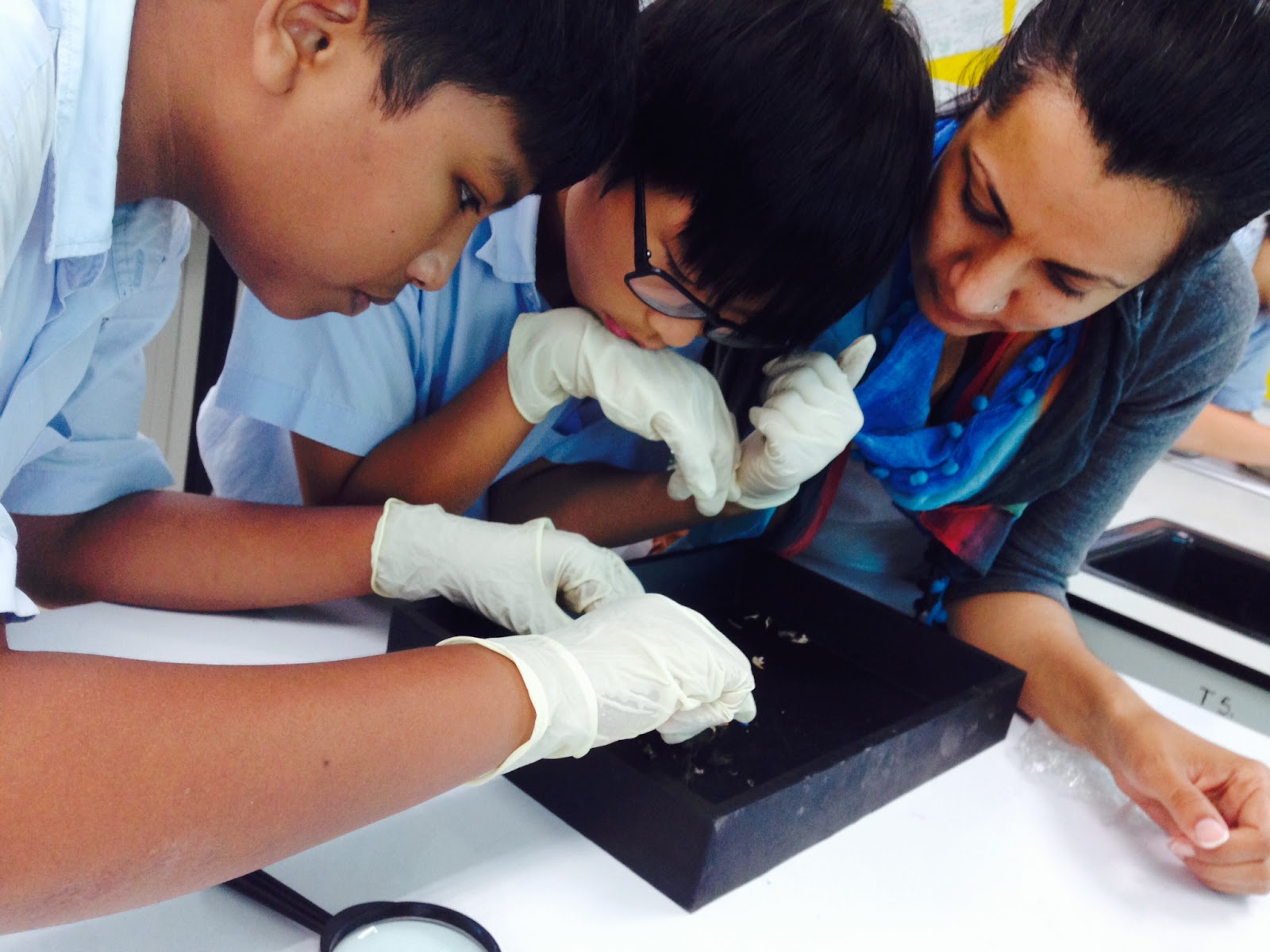Lesia and I are working with grade 7, 8, 9 and 10 at Tenby Penang. We've been planning with teachers to take existing curriculum and enrich it with hands on activities, more paired and group work, inquiry, discussion and presentations, and lots of scaffolding. I've been teaching kids to snap and it's taking off in some of the classes! In grade 7 students are learning about classification and variation and are then dissecting owl pellets! In grade 8 we're building on human reproduction by comparing chick development and human embryo development and then dissecting unfertilized chick eggs. In grade 9, students are working in groups to learn about the characteristics of life and a
daptations, researching different biomes and then creating aliens adapted to their specific biomes. They will then present their work. In grade 10, students are researching different human impacts on the global and local environment and then doing group presentations to teach their peers. The kids in all classes have been really lovely. They call us Ms. Uzma and Ms. Lesia. I think they've really been enjoying our lessons and especially the hands on activities. Students in other classes seem disappointed that we're not teaching their classes. Hopefully the teachers we're working with will try some of our approaches after we leave. Like teachers back home they are challenged by having to finish content and preparing for exams. We're trying to impart that these approaches will help them in the long run though they may seem like a sacrifice initially. Whatever happens we know this: Kids are kids wherever you go. They are similar developmentally, socially, and behaviorally and we love teaching kids who are curious and eager to learn science, whether in the States or here in Malaysia.
 |
| Agenda. Keep in mind 2-7 is 7-2 back home. |
 |
| Note-taking. No binders here. Notebooks which are left in the classroom. Students don't seem to get much HW as a result. |
 |
| Egg dissection. Breaking through shell to see air sac and membrane. |
 |
| Observations must always include measurement if possible. Thankfully the students use the metric system all the time here. |
 |
| Owl Pellet: Collecting and separating bones from fur. |
 |
| Observations. |
 |
| "We found four skulls!!" |
 |
| "Do we have even one skull? |
 |
| Skull. Rodent or Shrew? Use the dichotomous key. |












No comments:
Post a Comment